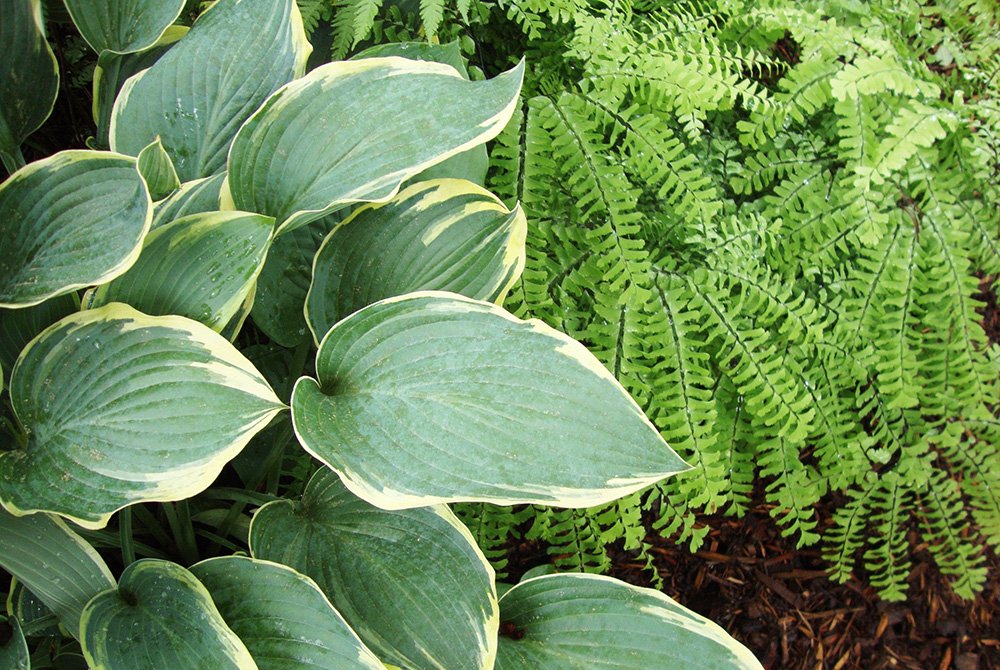Creating a Layered Garden
/Every gardener wants a lush, colorful garden that brims with excitement and interest throughout the year. But how do you achieve this? By creating a "layered garden" - one in which the plantings are carefully selected to provide a succession of interesting combinations (or layers) from spring through fall.
In his excellent book, The Layered Garden, David Culp illustrates this concept with stunning photographs of his gardens at Brandywine Cottage in Bucks County, Penn. As he writes in his book:
"The key to creating a many-layered garden is understanding and taking advantage of the ways plants grow and change through the seasons and over the years, providing different textures, colors, and effects and evoking a variety of feelings. Garden layers are made up of a variety of plants, some with complementary or contrasting colors, other with interesting shapes and textures."
I created my layered perennial garden so that I would have a nice view from my kitchen windows. I wanted to use bright, "hot" colors somewhere on my property, and this location seemed ideal since it was a little further from the house. This kidney-shaped island garden was originally planted around a lone small apple tree that later succumbed to disease. It was replaced by the white tuteur, made for me by my brother-in-law. The shape of the tuteur echoes the dwarf Alberta Spruce on the left and provides a focal point for the garden in all seasons. Although the garden has gone through many changes, the concept and some of the plantings have not changed in 24 years.
The kidney garden has grown over the years to its current size of 28' long and 24' deep. It has always had small access paths so that I would not have to step on the soil.
The first blooms of early spring are daffodils and species tulips. I moved and divided my forsythia bush so that it would be a colorful backdrop to the blooming daffodils. The daffodils are interplanted with daylilies, so as the daylilies grow, their foliage hides the foliage of the daffodils.
The species tulips bloom in April. Unlike most tulips, they are short in stature and truly perennial. They also have beautifully mottled foliage.
In early May, Darwin tulips and forget-me-nots begin to bloom, along with the PJM rhododendrons in the background. The forget-me-nots self-sow from year to year. Once they are done blooming, I remove most of them so make room for emerging perennials.
The fritillary, also called "Crown Imperial", is a regal bulb.
Darwin tulips are more hardy than many other varieties and return year after year. I add more bulbs every 4-5 years to keep my spring show going.
One of the joys of the layered garden is that it allows for flexibility, letting me change the predominant colors of the garden several times during the year. By early June, the color scheme of the garden has transitioned to blue and yellow.
Bulbs are key to achieving a layered look. They take up little space, and their foliage completely dies back later in the season, making room for other plants.
Baptisia produces tall spikes of bright blue flowers and handsome blue-green foliage. It is now the size of a shrub, and I stake it to keep it upright all summer long.
Allium 'Globemaster' produces giant purple globes on sturdy tall stems. It's especially vibrant next to the 'Goldheart' bleeding heart.
I purchased these 'Johnson's Blue' geraniums from Bluestone Perennials more than 20 years ago. They have been divided several times, and continue to form a cloud of blue in June.
My tuteur sports clematis 'HF Young' - a variety with giant flowers. Climbing vines are another asset to a layered garden - they add height, but have a small footprint.
Centaurea montana, or perennial Bachelor's Button has beautiful azure flowers.
In late June, the garden turns to gold and green with the prolific blooms of daylily 'Stella de 'Oro'. I try to plant the perennials in large swaths so that they have impact in the garden from a distance.
Several self-seeding plants weave through the perennials. I remove some in the spring, and leave the others to create an informal English cottage look. Golden feverfew, one of the self-seeders, provides bouquets of tiny daisy flowers and bright chartreuse foliage.
Coreopsis 'Zagreb', also known as Tickseed, is a long bloomer in full sun.
Daylilies begin their show in July. 'Margaret Seawright' is a gorgeous bi-colored variety.
Daylily 'Bloodline' complements its neighbor, scarlet Bee Balm.
The feathery gold foliage of Spirea 'Ogon' and Amsonia contrasts with the strappy foliage of daylilies.
Purple Perilla is another self-sower that adds drama to the late summer garden.
Several varieties of helianthus and rudbeckia create great cut flowers for the house.
These Orienpet lilies add a wonderful fragrance to the entire garden. They came as a set of 25 unnamed bulbs from White Flower Farm.
I grew aster 'Nova Anglie' from seed 24 years ago, and if the woodchuck does not get it, it provides armloads of flowers in September.
Rudbeckia, zebra grass and perilla in the autumn garden. I like the planting to be full - no mulch visible.
Sedum 'Autumn Joy' and Michaelmas daisy welcome autumn.
Always consider your garden's backdrop.'Karl Foerster' grass, variegated sedum, a golden cypress and burgundy Witherod Viburnum provide a lovely background for the garden in late fall as the perennials die back.
You Might Also Like




































